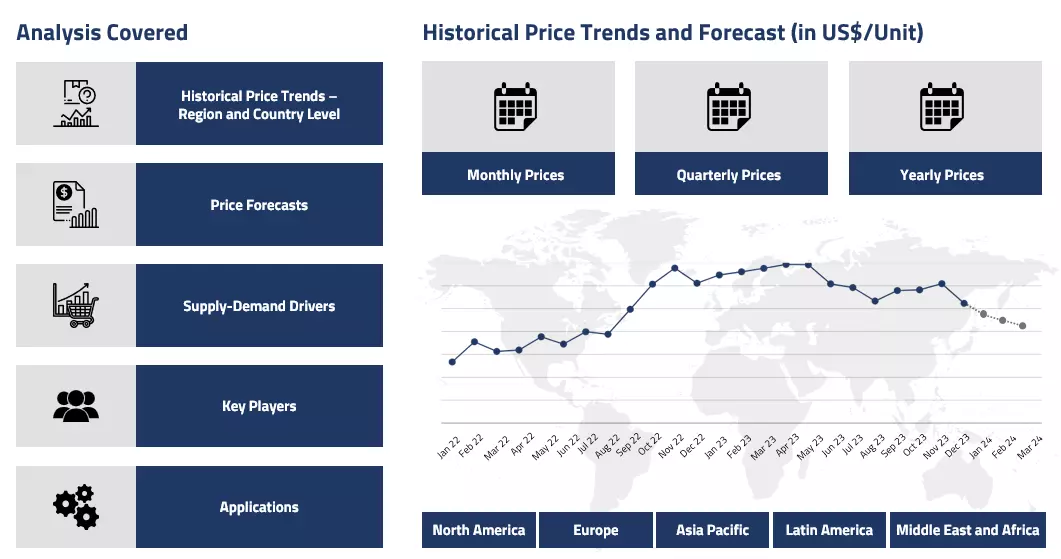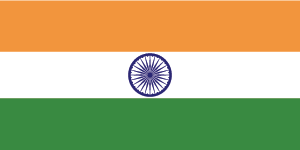Product
Interbank Rate Trend
Interbank Rate Trend
Interbank Rate Regional Overview
Get the latest insights on price movement and trend analysis of Interbank Rate in different regions across the world (Asia, Europe, North America, Latin America, and the Middle East & Africa).
Interbank Rates Trend for the First Half of 2023
Interbank Rates are the rates at which major global banks lend to one another in the international interbank market. The Interbank Rates were usually measured as LIBOR (London Interbank offered rate), which was a globally accepted benchmark interest rate that was published on a daily basis by Intercontinental Exchange (ICE). But the calculations were always under question, so as of June 30th, 2023, the LIBOR has been phased out and replaced by the Secured Overnight Financing Rate (SOFR).
Interbank Rate Chart

Please Login or Subscribe to Access the Interbank Rate Chart Data
In Q1’23, the international claims have risen by 619 billion USD, and the credit loans and holdings of debt securities have risen by 921 billion USD. However, the YOY growth in cross-border credit has slowed during the said period.
Analyst Insight
According to Procurement Resource, the global Interbank Rates will continue to fluctuate amidst the current events of geoeconomic and geopolitical importance.
Interbank Rates Trend for the Second Half of 2022
The interest rate on the interbank overnight borrowing of reserves is called the Fed Fund Rate. Financial conditions have become difficult internationally, first because of the COVID-19 pandemic and then the war between Russia and Ukraine. Inflation mounted as global trade suffered amidst curtailed supply chains. Interbank rates, too, rose along with domestic interest rates. Overall, rising interbank rates were observed.
Analyst insight
According to Procurement Resource, interbank rates are likely to rise in the coming months as well because of the rising global inflation.
Interbank Rate Trend for the First Half of 2022
In India, the interbank rate kept rising steadily. The rate averaged 4.25% in April and went on to 5.17% towards the end of June 2022. In China, the interbank rate recorded an oscillating trend, however, in all it was towards the lower end. It fluctuated between 2.47-3.08% during the said period.
In Europe, the Euribor ( Euro interbank offered rate) for 6 months averaged between 0.291-0.273 % while that of 1 year fluctuated between 1.124-1.089% towards the end of said period.
In the US, the global pandemic caused a drop in the immediate call money/interbank rate. It went from 1.58% in Feb’22 to under 0.05% just a few months after. In March 2022, the rate averaged 0.2% with no signs of increasing.
Interbank Rate Trend For the Fourth Quarter of 2021
Asia
In India, the call money rate, which banks use to lend to one another, reached 4.55% during March 2021 trade. Additionally, it reached a high of 4.65%. In light of LIBOR's impending discontinuation, the RBI stated that any commonly accepted interbank rate to the currency of lending may be used as an index post-discontinuation.
According to information from the Shanghai Commercial Paper Exchange, the interest rate Chinese banks paid to loan from other banks using corporate paper as collateral increased above 2.6 % late last week. It fell to near-zero levels last month as banks competed to lend money to one another in order to meet government lending quotas.
Europe
While some European countries, such as Switzerland, Germany, and Italy, had negative interbank interest rates, others, such as Turkey, Ukraine, and Russia, had rates of 15.63 %, 11.61 %, and 10.59 % in the first quarter of 2022, respectively.
In a significant move aimed at crippling Russia's economy, the US and key allies, including the EU and the UK, decided to cut key sanctioned Russian banks off from the global banking system SWIFT and impose restrictive measures on the country's central bank in rebuttal to Moscow's invasion of Ukraine. SWIFT, otherwise known as the Society for Worldwide Interbank Financial Telecommunication. It is the primary banking messaging service in the world, connecting approximately 11,000 banks and institutions in over 200 countries.
North America
In the last quarter of the year 2021, the interbank rates remained stagnant at 0.08% in the months of October, November and December.
Latin America
The interbank rate in Argentina increased to 31.44 % in January from 30.56 % in December of 2021. In the final quarter, the peak was achieved in November 2021 when the rate in Argentina was 31.14%. Further, the interest rate in Brazil was 5.39% while that in Mexico was 6.02% in the fourth quarter.
Interbank Rate Trend For First, Second and Third Quarters of 2021
Asia
The rates in India increased continuously from Jan 2021 to Feb 2021, staying constant in March 2021 at 3.75%. With a slight decrease in early April and May, the trend continued till September 2021, when the rates were evaluated at 3.8%.
Europe
In 2021, European banks and other related financial firms had to pay to keep their excess reserves stored at the central bank, rather than receiving some positive interest income. The interbank rates were negative throughout the year. The year started with -0.478% in January 2021 and was at -0.485% in September 2021.
North America
The trend of stagnant interbank rates was carried from the year 2020 well into 2021,with 0.1% being the highest in July 2021.
Latin America
The rates in Argentina increased throughout the first quarter and well into the second one as well, with May 2021 rates reaching the apex at 32.29 %. The trend discontinued in the latter two quarters as interest rates decreased, reaching 31.46 % in September 2021.
Interbank Rate Trend For the Year 2020
Asia
Interest rates in the interbank money market increased in March 2020, as risk aversion toward lending to weaker banks and a tendency to hoard cash in anticipation of further financial market stress gained traction amid a general decline in asset values.
The spread between the repo rate, the rate at which the RBI gives to banks, and the call rate, a key indicator of market stability, widened to as much as 35 basis points, triggering a new round of liquidity-enhancing measures by the cent. During normal times, the spread is approximately five basis points or less. Until February, banks were lending to one another at rates lower than the repo rate, a reflection of the market's excess liquidity.
However, despite the RBI's supplemental liquidity measures, the spread increased above the policy rate as banks became more risk averse due to concerns about market seizing up due to capital flight. Credit dislocation was accelerating in the face of Covid-19 uncertainty.
In November 2020, the Reserve Bank of India also announced that it would proceed with its plan to develop a new benchmark to replace the Mumbai Interbank Forward Outright Rate (MIFOR), as the London Interbank Offered Rate (LIBOR), the global reference point for borrowing, was set to expire at the end of 2021. India's exposure to LIBOR is estimated to be around USD 331 billion in the shape of borrowings, bonds, FCNR deposits, and derivative contracts.
North America
The interbank rates fell from 1.55% in January 2020 to 0.05% in May 2020. It remained more or less the same for the rest of the year after that.
Latin America
The interbank rates in Argentina progressively decreased from January 2020 (39.48%) to March 2020 (30.13%). They hit an all-time low in April 2020 amounting to 8.02%. This low was attributed to the panic caused by the coronavirus pandemic. They only increased after this fiasco. They were evaluated at 27.46% in December 2020.
Procurement Resource provides latest prices of Interbank Rate. Each price database is tied to a user-friendly graphing tool dating back to 2014, which provides a range of functionalities: configuration of price series over user defined time period; comparison of product movements across countries; customisation of price currencies and unit; extraction of price data as excel files to be used offline.
About Interbank Rate
The interbank rate refers to the rate that banks use while trading a large amount of foreign currencies with one and other. As this rate is pretty much reserved for banks and big financial institutions, the average person engaged in smaller money transfer is likely to be offered a marked-up rate so that the organisation involved in exchanging can make a profit. Many services (like Reuters) provide the status of interbank rate at any given time, but these rates are susceptible to several minute factors and can fluctuate at any point of time.
Interbank Rate Product Details
| Report Features | Details |
| Product Name | Interbank Rate |
| Region/Countries Covered | Asia Pacific: China, India, Indonesia, Pakistan, Bangladesh, Japan, Philippines, Vietnam, Iran, Thailand, South Korea, Iraq, Saudi Arabia, Malaysia, Nepal, Taiwan, Sri Lanka, UAE, Israel, Hongkong, Singapore, Oman, Kuwait, Qatar, Australia, and New Zealand Europe: Germany, France, United Kingdom, Italy, Spain, Russia, Turkey, Netherlands, Poland, Sweden, Belgium, Austria, Ireland Switzerland, Norway, Denmark, Romania, Finland, Czech Republic, Portugal and Greece North America: United States and Canada Latin America: Brazil, Mexico, Argentina, Columbia, Chile, Ecuador, and Peru Africa: South Africa, Nigeria, Egypt, Algeria, Morocco |
| Currency | US$ (Data can also be provided in local currency) |
| Supplier Database Availability | Yes |
| Customization Scope | The report can be customized as per the requirements of the customer |
| Post-Sale Analyst Support | 360-degree analyst support after report delivery |
Note: Our supplier search experts can assist your procurement teams in compiling and validating a list of suppliers indicating they have products, services, and capabilities that meet your company's needs.
Methodology
The displayed pricing data is derived through weighted average purchase price, including contract and spot transactions at the specified locations unless otherwise stated. The information provided comes from the compilation and processing of commercial data officially reported for each nation (i.e. government agencies, external trade bodies, and industry publications).
Assistance from Experts
Procurement Resource is a one-stop solution for businesses aiming at the best industry insights and market evaluation in the arena of procurement. Our team of market leaders covers all the facets of procurement strategies with its holistic industry reports, extensive production cost and pre-feasibility insights, and price trends dynamics impacting the cost trajectories of the plethora of products encompassing various industries. With the best analysis of the market trends and comprehensive consulting in light of the best strategic footstep, Procurement Resource got all that it takes.
Client's Satisfaction
Procurement Resource has made a mark for itself in terms of its rigorous assistance to its clientele. Our experienced panel of experts leave no stone unturned in ensuring the expertise at every step of our clients' strategic procurement journey. Our prompt assistance, prudential analysis, and pragmatic tactics considering the best procurement move for industries are all that sets us apart. We at Procurement Resource value our clients, which our clients vouch for.
Assured Quality
Expertise, judiciousness, and expedience are the crucial aspects of our modus operandi at Procurement Resource. Quality is non-negotiable, and we don't compromise on that. Our best-in-class solutions, elaborative consulting substantiated by exhaustive evaluation, and fool-proof reports have led us to come this far, making us the ‘numero uno' in the domain of procurement. Be it exclusive qualitative research or assiduous quantitative research methodologies, our high quality of work is what our clients swear by.
Table Of Contents
Our Clients

Get in Touch With Us

UNITED STATES
Phone:+1 307 363 1045

INDIA
Phone: +91 8850629517

UNITED KINGDOM
Phone: +44 7537 171117
Email: sales@procurementresource.com

